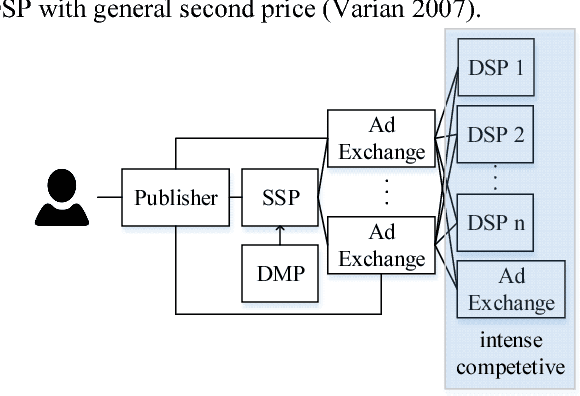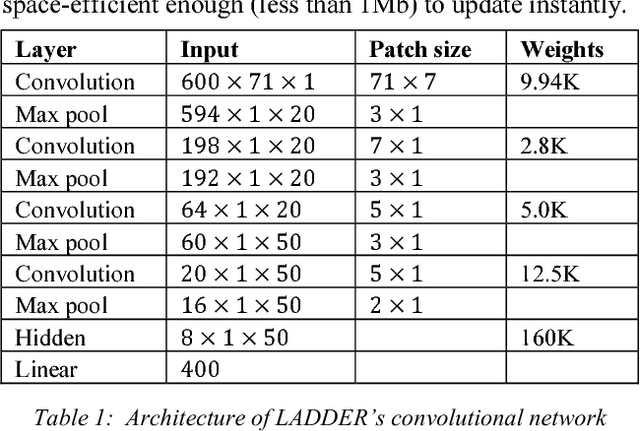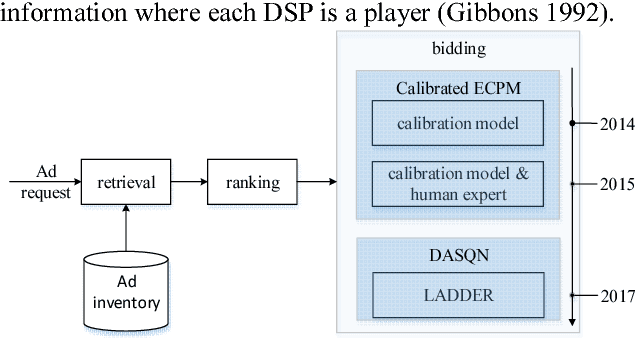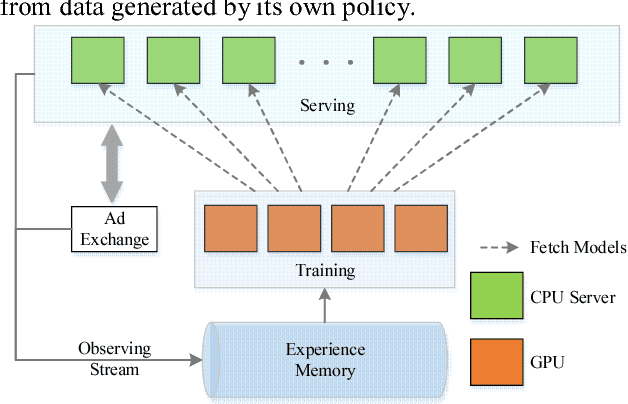Weipeng P. Yan
LADDER: A Human-Level Bidding Agent for Large-Scale Real-Time Online Auctions
Sep 01, 2017



Abstract:We present LADDER, the first deep reinforcement learning agent that can successfully learn control policies for large-scale real-world problems directly from raw inputs composed of high-level semantic information. The agent is based on an asynchronous stochastic variant of DQN (Deep Q Network) named DASQN. The inputs of the agent are plain-text descriptions of states of a game of incomplete information, i.e. real-time large scale online auctions, and the rewards are auction profits of very large scale. We apply the agent to an essential portion of JD's online RTB (real-time bidding) advertising business and find that it easily beats the former state-of-the-art bidding policy that had been carefully engineered and calibrated by human experts: during JD.com's June 18th anniversary sale, the agent increased the company's ads revenue from the portion by more than 50%, while the advertisers' ROI (return on investment) also improved significantly.
Optimizing Gross Merchandise Volume via DNN-MAB Dynamic Ranking Paradigm
Aug 14, 2017



Abstract:With the transition from people's traditional `brick-and-mortar' shopping to online mobile shopping patterns in web 2.0 $\mathit{era}$, the recommender system plays a critical role in E-Commerce and E-Retails. This is especially true when designing this system for more than $\mathbf{236~million}$ daily active users. Ranking strategy, the key module of the recommender system, needs to be precise, accurate, and responsive for estimating customers' intents. We propose a dynamic ranking paradigm, named as DNN-MAB, that is composed of a pairwise deep neural network (DNN) $\mathit{pre}$-ranker connecting a revised multi-armed bandit (MAB) dynamic $\mathit{post}$-ranker. By taking into account of explicit and implicit user feedbacks such as impressions, clicks, conversions, etc. DNN-MAB is able to adjust DNN $\mathit{pre}$-ranking scores to assist customers locating items they are interested in most so that they can converge quickly and frequently. To the best of our knowledge, frameworks like DNN-MAB have not been discussed in the previous literature to either E-Commerce or machine learning audiences. In practice, DNN-MAB has been deployed to production and it easily outperforms against other state-of-the-art models by significantly lifting the gross merchandise volume (GMV) which is the objective metrics at JD.
 Add to Chrome
Add to Chrome Add to Firefox
Add to Firefox Add to Edge
Add to Edge